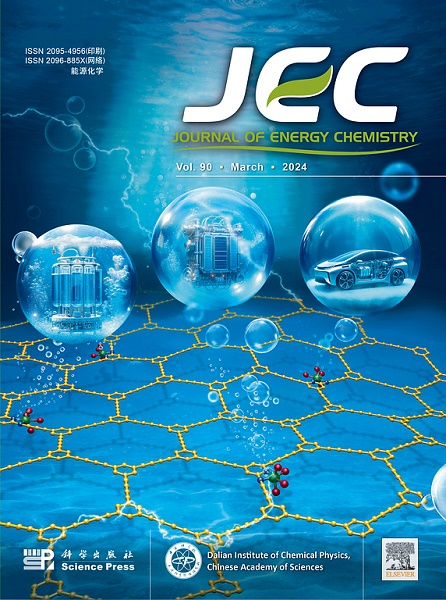Evaluating the feasibility of copper-based skeletons in lithium metal batteries operated at subzero temperature
IF 13.1
1区 化学
Q1 Energy
引用次数: 0
Abstract
The next-generation lithium (Li) metal batteries suffer severe low-temperature capacity degradation, appealing for expeditions on solutions. Herein, the feasibility of copper-based skeletons (i.e., 2D Cu foil, 3D Cu mesh, and CuZn mesh) frequently adopted in the stabilization of Li are evaluated at low temperatures. Li growth patterns and stripping behaviors on different skeletons and at different temperatures uncover the dendrite-free and dead-Li-less Li deposition/dissolution on CuZn mesh. Three-electrode impedance indicates the dynamic advantages of CuZn mesh, driving fast Li+ crossing through solid-electrolyte-interphase and charge transfer process. Notably, CuZn mesh enables the stable operation and fast charging (1.8 mA cm−2) of Li || LiFePO4 cells for over 120 cycles at −10 °C with a superior capacity retention of 88%. The success of CuZn mesh can be translated into lower temperature (−20 oC) and 1.0-Ah-level pouch cells. This work provides fundamentals on improving low-temperature battery performances by skeletons with regulated spatial structure and lithiophilicity.

求助全文
约1分钟内获得全文
求助全文
来源期刊

Journal of Energy Chemistry
CHEMISTRY, APPLIED-CHEMISTRY, PHYSICAL
CiteScore
19.10
自引率
8.40%
发文量
3631
审稿时长
15 days
期刊介绍:
The Journal of Energy Chemistry, the official publication of Science Press and the Dalian Institute of Chemical Physics, Chinese Academy of Sciences, serves as a platform for reporting creative research and innovative applications in energy chemistry. It mainly reports on creative researches and innovative applications of chemical conversions of fossil energy, carbon dioxide, electrochemical energy and hydrogen energy, as well as the conversions of biomass and solar energy related with chemical issues to promote academic exchanges in the field of energy chemistry and to accelerate the exploration, research and development of energy science and technologies.
This journal focuses on original research papers covering various topics within energy chemistry worldwide, including:
Optimized utilization of fossil energy
Hydrogen energy
Conversion and storage of electrochemical energy
Capture, storage, and chemical conversion of carbon dioxide
Materials and nanotechnologies for energy conversion and storage
Chemistry in biomass conversion
Chemistry in the utilization of solar energy
 求助内容:
求助内容: 应助结果提醒方式:
应助结果提醒方式:


